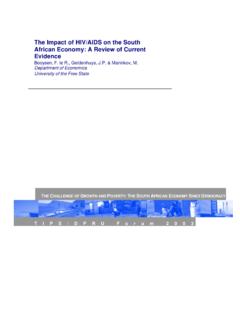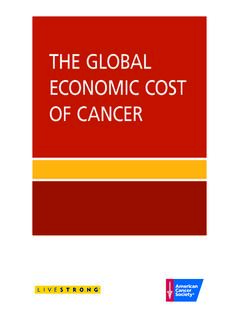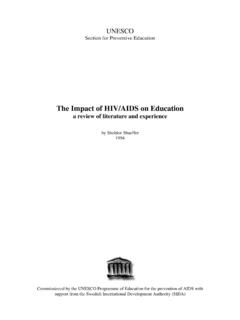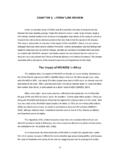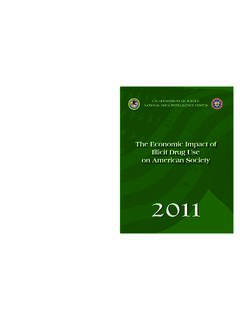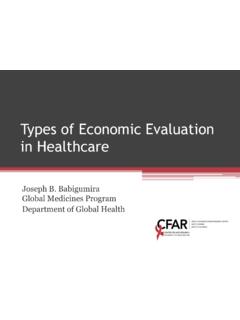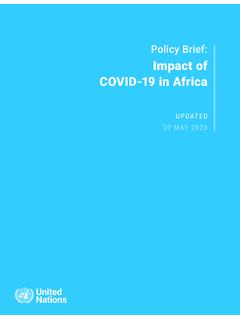Transcription of Division of HIV/AIDS Prevention Strategic Plan 2017 - 2020
1 Division of HIV/AIDS Prevention Strategic Plan 2017 - 2020 DHAP Strategic Plan 2017-20201 Message from DirectorThe Division of HIV/AIDS Prevention (DHAP) is pleased to present its updated Strategic Plan 2017 2020. This Plan is DHAP s blueprint for achieving its vision of a future free of HIV. The Plan encompasses the Strategic aspects of the Division s work and will continue to serve as a practical guide to inform the work and to ensure DHAP activities and resources are aligned with its Plan was updated to reflect the important advances made in Prevention science, including but not limited to the discovery of and increased use of pre-exposure prophylaxis (PrEP) as a highly effective tool in HIV Prevention ; the identification of new interventions as part of the High-I mpact HIV Prevention approach; the development and implementation of new testing technologies; and focused efforts to improve outcomes along the HIV care continuum.
2 The Plan emphasizes maximizing DHAP s impact , increasing internal and external coordination and collaboration, and ensuring Strategic allocation of resources. In this Plan, the Division also recognizes the need to remain flexible as Prevention science continues to the start of the Strategic planning process, the Division updated the following high-level Prevention goals designed to guide its HIV Prevention efforts: Prevent new HIV infections Improve health outcomes for persons living with HIV Reduce HIV-related disparities and health inequities Continually improve effectiveness and efficiency of operationsThese goals align with national HIV Prevention goals. In addition, the Division identified key objectives and strategies to help in focusing its work on Strategic efforts needed to advance these goals and to attain a future free of developing these goals, objectives, and strategies, DHAP acknowledges that a range of social, economic , and demographic factors make some Americans more vulnerable to HIV infection and, once infected, to inadequate care.
3 The Plan underscores the important role of partnerships in both reducing HIV incidence and addressing these disparities that persist among populations and within Strategic Plan 2017-20202To chart progress towards reaching these goals, DHAP has developed quantitative indicators that are ambitious, yet feasible. Tracking these indicators will provide the Division with important data to inform its planning and program activities, inspiring action in areas where improvement is needed. The Division will continue to strive, working closely with its partners, to better use the data available at local, state, and national levels to drive its actions, to inform priority setting, and to direct programmatic and scientific endeavors.
4 DHAP looks forward to collaborating with federal, state, and local organizations to achieve the goals in this plan and mark progress towards a future free of Strategic Plan 2017-20203 IntroductionCDC has been at the forefront of HIV Prevention efforts since the virus first emerged as a health threat, and CDC maintains its leadership role in working towards a future free of HIV in the United States. While the nation has come a long way, HIV continues to affect millions of individuals in the United States. CDC s latest estimates suggest that about 38,000 new infections occur each year and that million persons in the United States are now living with HIV. Of those million, an estimated 15%, or 1 in 7 persons, remain unaware of their infection.
5 Analysis of surveillance data continues to reveal dramatic disparities in rates of HIV infection and in achieving key healthcare objectives among populations and by geographic the release of the 2010 DHAP Strategic Plan, more HIV Prevention tools have been developed to help reduce new HIV infections and achieve national HIV Prevention goals. Making the most out of powerful biomedical Prevention options, such as pre-exposure prophylaxis (PrEP) and antiretroviral therapy (ART), requires that DHAP refines its strategies to best promote the use of these options. Recently released HIV Prevention modeling suggests that achieving national HIV Prevention goals of linkage to care, retention in care, and viral suppression (85%, 90%, and 80%, respectively), in combination with the increased use of PrEP, would avert 185,000 new infections by , CDC, the Department of Health and Human Services (HHS), and Preventive Services Task Force (USPSTF) have produced updated recommendations that incorporate these Prevention tools.
6 CDC developed guidelines and released recommendations focused on improved screening of persons behaviors that could transmit HIV; use of ART for improving health and for preventing HIV transmission; and encouraging providers to inform persons at high risk for HIV infection about the availability of Strategic Plan 2017-20204In the updated DHAP Strategic Plan, DHAP will work closely with national, state, and local partners to ensure that 1) HIV testing is simple, available, and routine; 2) persons living with HIV have their infection diagnosed, are linked to care, and have access to the support services they need to stay virally suppressed; and 3) persons at high risk for HIV infection have the Prevention information and tools needed to protect themselves from also knows that it must prioritize efforts to reduce HIV-related health disparities and inequities.
7 To address these disparities requires that DHAP focus Prevention efforts on disproportionately affected populations and work towards reducing stigma and discrimination associated with HIV infection. DHAP must work collaboratively with federal agencies, including the Health Resources and Services Administration (HRSA), the Substance Abuse and Mental Health Services Administration (SAMHSA), the Department of Housing and Urban Development (HUD), and others, to support structural approaches to HIV Prevention and care. Specifically, DHAP will support efforts to link persons at high risk of transmitting HIV to support services designed to address structural barriers that impact HIV Prevention and care, including unstable housing, lack of education or employment, and lack of adequate food to eat.
8 These collaborations can maximize the effectiveness of HIV Prevention services and support optimal health , in this plan, DHAP recognizes the need to remain flexible as Prevention science continues to evolve, and acknowledges the need to be prepared to integrate new strategies and implement new tools, to further advance the public health response to HIV in the United Strategic Plan 2017-20205 Mission and VisionVision: A future free of HIVM ission: To promote health and quality of life by preventing HIV infection and reducing HIV-related illness and death in the United StatesDHAP Strategic Plan 2017-2020 Centers for Disease Control and Prevention National Center for HIV/AIDS , Viral Hepatitis, STD, and TB Prevention 6 Core ValuesCollaborationEnsure cross-branch, office, and Division , federal inter-agency, and external partner interactions ( , science activities, knowledge sharing).
9 DiversityRecruit and maintain an inclusive and multi-disciplinary workforceEquityWork to achieve optimal health for the populations we serveExcellenceAchieve the highest standard of performance in science, program, and policyInnovationCreate an environment that encourages and values new ideasIntegrityBe accurate, consistent, honest, and accountable for decisions and actionsRespectTreat persons with professionalism and dignity; value diversity and differences of opinionStewardshipBe a diligent steward of the use of resources to achieve DHAP's public health missionTransparencyEffectively and appropriately communicate to staff, partners, and the public about our programs, policy, and scienceDHAP Strategic Plan 2017-2020 Centers for Disease Control and Prevention National Center for HIV/AIDS , Viral Hepatitis, STD, and TB Prevention 7 Core FunctionsCore functions are essential, foundational activities that DHAP engages in to monitor the trends in HIV; implement and evaluate Prevention programs; communicate priorities, information, and guidance to stakeholders and external partners.
10 And support efficiency in the management and operations of the Division . DHAP core functions are as follows:Surveilla neeResearch and DevelopmentPolicy, Planning, and CommunicationsProgram Implementation, Evaluation, and Capacity BuildingResource ManagementDHAP Strategic Plan 2017-20208 Goal 1: Prevent New HIV InfectionsOver the past 5 years, advances in HIV testing services such as delivery of couples counseling and testing for gay, bisexual, and other men who have sex with men (MSM); increased routine screening in clinical settings; and promotion of repeat testing for persons at ongoing risk for infection have been associated with increased uptake of testing in the United States (CDC, 2013).










